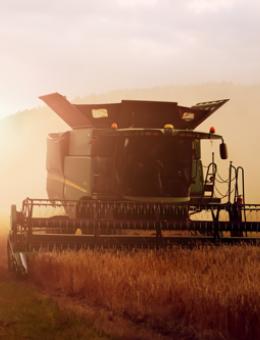
AT LAST, A LITTLE GOOD NEWS
Published 19 July 2025
Much like the rest of the country, farmers awaited Rachel Reeves’ spending review with apprehension, but it was after the event that the big news came, and for once it was good: a £2.7 billion commitment for sustainable farming and nature recovery from 2026 to 2029 – not far off the sum committed during the previous spending period, writes Simon Evans.
Given that the existing pot has simply run dry and was suddenly closed, this will be a huge relief for everyone in the agricultural community, and no less a surprise.
One hopes that it comes from a realisation of just how tough farming is finding it at the moment, with the inheritance tax bombshell compounded by world output prices falling through the floor and yet another difficult harvest in prospect for many.
With the various political pressures that it is facing at the moment, perhaps the Labour government believes that committing funding towards its environmental aspirations will deliver some much-needed good news. It is a bit of a surprise that the DEFRA and Treasury spin doctors didn’t make a bit more of it.
This is a win in particular for those with marginal land, where potential yields stand no chance of breaking even in the current climate and market conditions. The difference in yield between productive land and poor land can be striking: for barley, which is the main crop being cut in the Easter Counties at the moment, it can mean the difference between five tonnes and nine tonnes a hectare – as much as £650 a hectare in revenue.
The ability to allocate less productive land into SFI schemes is a lifeline in many cases. The sudden switching off of the funding tap earlier this year was a shock to many, and the decision to re-open it for those who had already started an application before the axe fell is welcome, as is the re-opening of the Capital Grant Scheme for initiatives such as planting hedgerows and trees, improving air quality, fencing and farmyard repairs.
However, for those whose Countryside Stewardship Agreements came to an end last December, the wait for this new money to start to flow, probably, in 2026 is a long one – but at least we now know that the pot will be replenished, which was far from a given.
All of this is having a knock-on effect on land values. Although they are holding up in general, the factors which determine value have changed: no longer just potential yield per acre, but a more complex combination of environmental value, the direction of policy and investment potential.
Share this story
Arnolds Keys Blog

WE MUST THINK REGIONALLY TO MAXIMISE OUR OPPORTUNITIES
16 July 2025
Opportunity East, a new investment prospectus for the East of England, has just been published – and it’s a timely reminder of how well placed our region is to take... Read more >

THE GROWING IMPORTANCE OF GUARANTORS IN THE LETTINGS MARKET
11 July 2025
One change in the lettings market which is likely to be ushered in by the forthcoming Renters’ Right Bill is the rising importance of guarantors, writes Phil Cooper. Read more >

BUYERS WANT TO BE VILLAGE PEOPLE
4 July 2025
It might be summer in the city, but just recently we have noticed a definite trend with growing demand for homes in villages – with buyers seeking extra space, peace... Read more >

WATERCOLOUR OF LANDMARK NORWICH RESTAURANT CARRIES OFF PRESTIGIOUS SPONSOR’S CHOICE AWARD AT ROYAL NORFOLK SHOW ART EXHIBITION
3 July 2025
A watercolour painting of a landmark Norwich restaurant has carried off the prestigious Sponsor’s Choice Award at the Royal Norfolk Show Art Exhibition this year. Read more >
